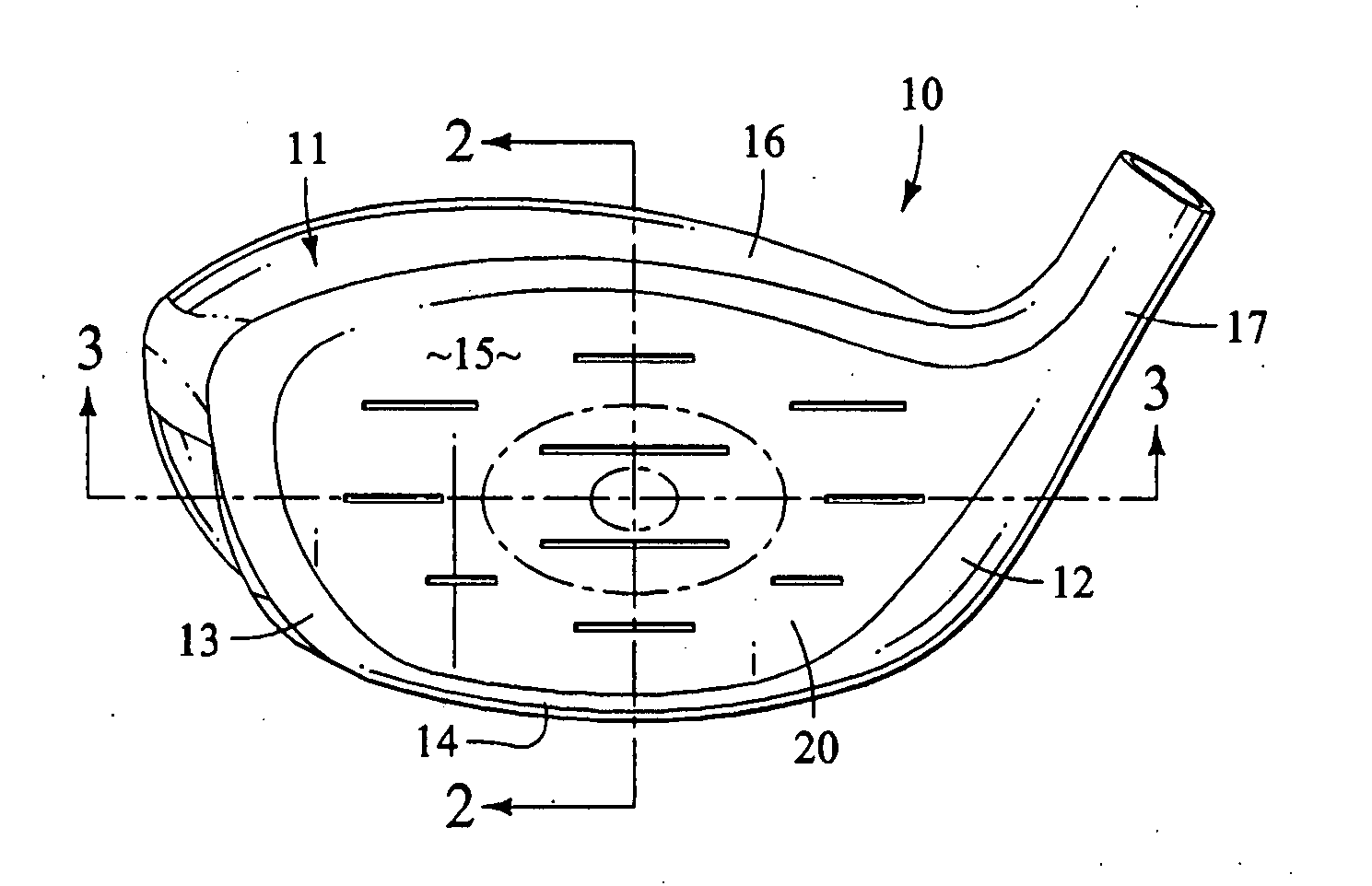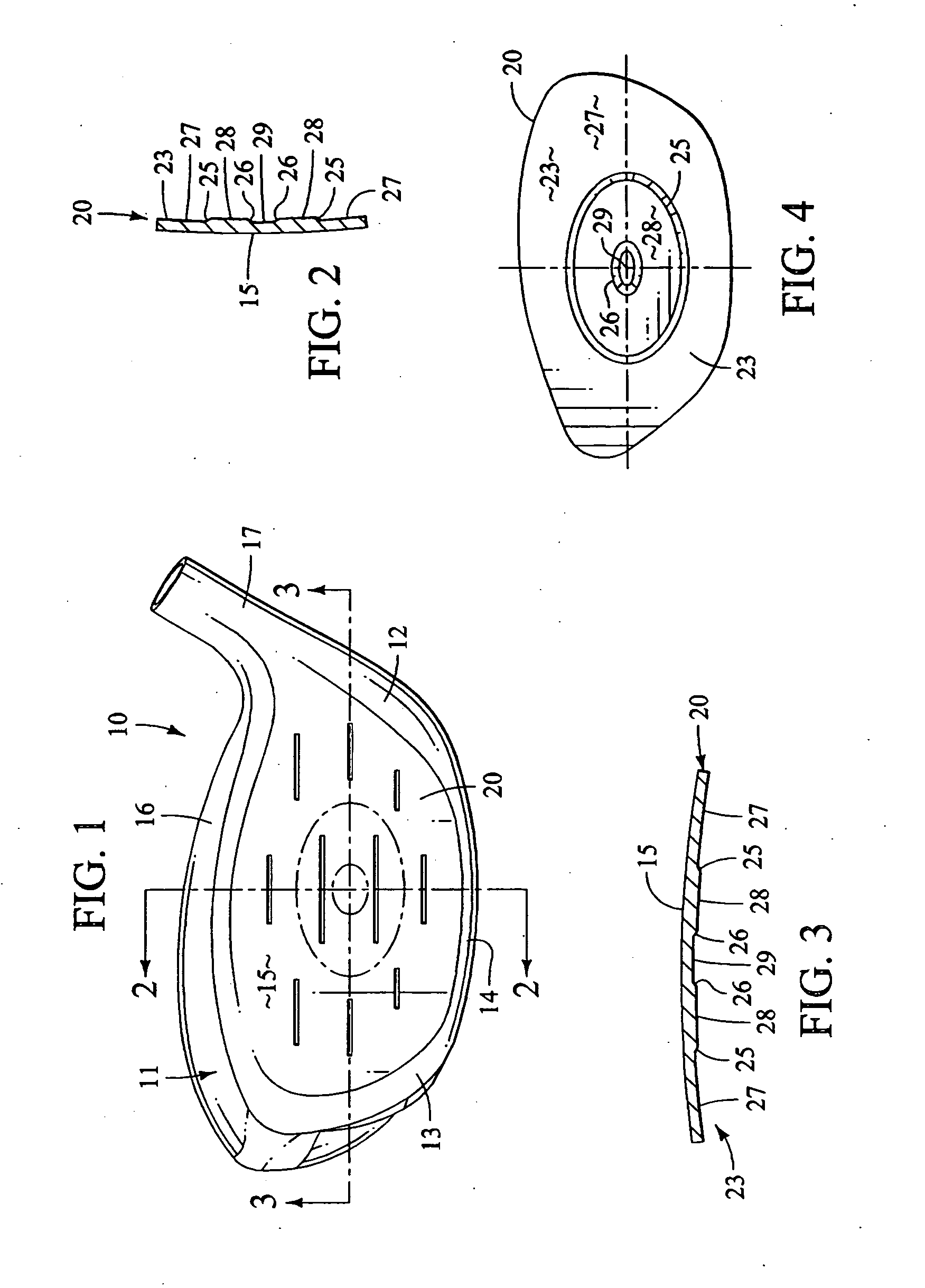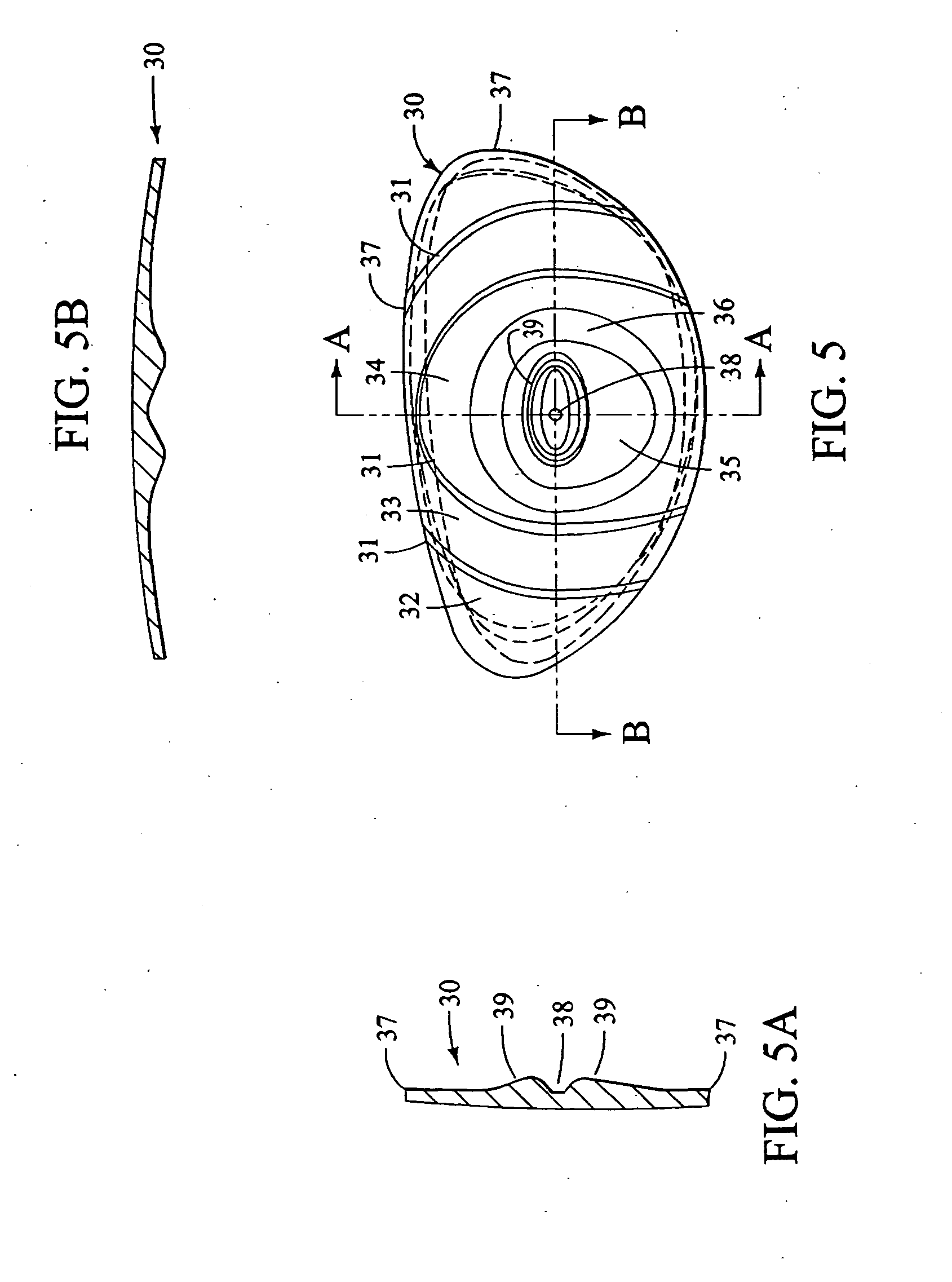Golf club head
a golf club and club head technology, applied in the field of golf club heads, can solve the problems of affecting the center of gravity of the club head, affecting the size of the golf club head, and imparting more energy, and achieve the effect of high initial velocity and greater forgiveness
- Summary
- Abstract
- Description
- Claims
- Application Information
AI Technical Summary
Benefits of technology
Problems solved by technology
Method used
Image
Examples
Embodiment Construction
[0050] The drawings depict several preferred embodiments of a golf club head in accordance with the present invention. With reference to FIG. 1, a club head 10 is shown that is similar to many metal wood club heads that are known in the art. Club heads within the scope of the invention are not necessarily limited to the shape depicted. The club head comprises a hollow metallic body 11 and a striking or face plate 20. The body comprises a heel portion 12, a toe portion 13, a sole portion 14 and a crown portion 16 that cooperate to define an opening (not shown) that receives the striking plate. The striking plate is shown in greater detail in FIGS. 2-4. The club head is normally connected to a shaft (not shown) by a hosel 17 that is integrally formed with the body. Preferably, the body is constructed of stainless steel or a titanium alloy, but alternatively can be constructed of other materials such as a silicon steel alloy, various composites, and combinations thereof. The club head ...
PUM
 Login to View More
Login to View More Abstract
Description
Claims
Application Information
 Login to View More
Login to View More - R&D
- Intellectual Property
- Life Sciences
- Materials
- Tech Scout
- Unparalleled Data Quality
- Higher Quality Content
- 60% Fewer Hallucinations
Browse by: Latest US Patents, China's latest patents, Technical Efficacy Thesaurus, Application Domain, Technology Topic, Popular Technical Reports.
© 2025 PatSnap. All rights reserved.Legal|Privacy policy|Modern Slavery Act Transparency Statement|Sitemap|About US| Contact US: help@patsnap.com



